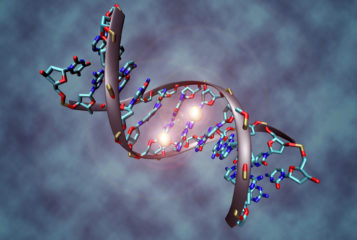Exposure to low levels of oxygen in the womb may cause fertility problems for female offspring later in life.
The research, carried out on rats, suggests that exposing female fetuses to chronic hypoxia (low oxygen levels) during development can lead to advanced ageing of the ovaries and a reduced egg count. Previous studies have indicated that exposure to low oxygen levels during fetal development can have long-term health effects, but this is the first time that it has been linked to the next generation's fertility.
'It's as if low levels of oxygen caused the female's ovarian tissue to age faster,' said Dr Catherine Aiken of the Metabolic Research Laboratories at the University of Cambridge, who carried out the research, which is published in the FASEB journal. 'Biologically, the tissue appears older and the female would run out of eggs – in other words, become infertile – at a younger age.'
To investigate the effects of hypoxia, the researchers placed pregnant female rats in an environment with lower oxygen levels – 13 percent, compared with the 21 percent found in normal air – and examined the reproductive tract of the female pups once they were four months old.
They found that the pups exposed to lower oxygen levels had a decreased number of ovarian follicles in their reproductive tract. Females are born with a fixed number of follicles, all with the potential to develop into an egg.
The researchers also looked in ovarian tissue at the length of telomeres – DNA sequences at the end of chromosomes, which protect against deterioration. As we age, the telomere sequence shortens, and so examining telomere length can be indicative of cellular ageing. The team found that telomeres in the ovarian tissue of pups exposed to low oxygen levels were shorter than pups who received adequate oxygen in utero.
The team believe the findings in rats could be relevant for clinical practice, as their reproductive biology is similar to humans and previous studies on hypoxia in rats have been translated into human medicine. In humans, hypoxia in the womb can be caused by a number of factors, including smoking, living at high altitude and pre-eclampsia.
It is hoped that the work will prove beneficial for women who were exposed to low oxygen levels in utero.
'Now that we've seen a link between hypoxia and fertility problems in rats, we know what to look for in women,' said Dr Aiken. 'If the same turns out to be true for them, then women at risk will be able to take action: [having] children earlier in life or looking to use assisted reproduction.'






Leave a Reply
You must be logged in to post a comment.